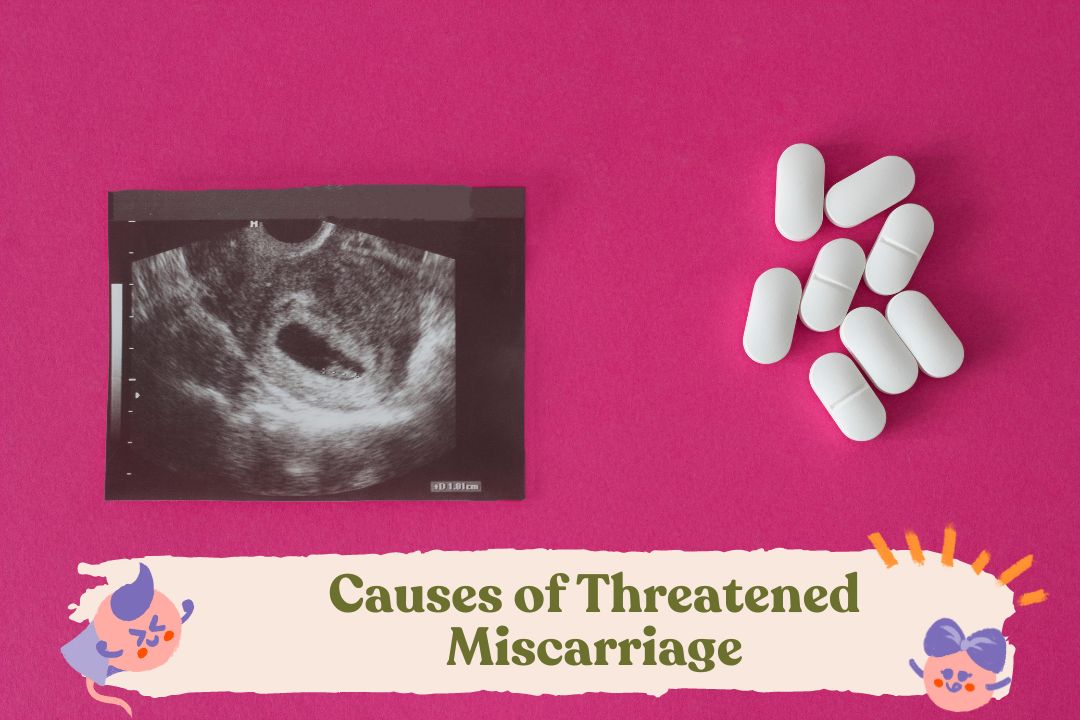Episiotomy: Procedure, Types, Risks, and Recovery After Birth

Lateral episiotomy is one of the episiotomy techniques designed to help the baby’s delivery and prevent irregular vaginal tears that may be more difficult to heal.
Some mothers experience easy deliveries, but in some cases, the vaginal opening is not wide enough to allow the baby’s head to pass through. This condition must not be left untreated, as it may cause vaginal tears and endanger the baby’s safety. Therefore, doctors may perform an episiotomy to make the delivery easier. Learn more about the procedure and types of episiotomy here.
What Is Episiotomy?
Episiotomy is a procedure in which an obstetrician makes a small incision between the lower part of the vaginal opening and the anus (the perineum) during childbirth. This incision widens the vaginal opening, making it easier for the baby to be delivered.
Sometimes, the perineum may tear naturally during delivery, which is called perineal tearing. Episiotomy is not a standard procedure for all births but is performed only when there are specific medical indications. Natural tears usually heal faster and have a lower risk of complications than a planned or intentional episiotomy.
Episiotomy involves making an incision in the perineum to widen the birth canal, but it carries risks such as infection, prolonged pain, or healing difficulties if not absolutely necessary.
Tanya Mincah tentang Promil?
While episiotomy is not common, there are certain situations where a doctor may consider it the safest option, such as:
- The baby is in distress and needs to be delivered urgently.
- The mother is exhausted and dehydrated due to prolonged labor.
- The doctor needs to use forceps or a vacuum to assist in delivery, and the vaginal opening needs to be enlarged to use these instruments.
- The baby is in a breech position or has shoulder dystocia (shoulders stuck in the pelvis).
- The baby is large.
- The mother has been pushing for too long or cannot control the urge to push.
Types and Degrees of Episiotomy
There are 4 types of episiotomy, and the choice of type depends on the medical condition and the doctor or midwife’s preference. Here’s an explanation of the types of episiotomy:
- Mediolateral: In this type of episiotomy, the doctor makes an incision to the right or left of the midpoint of the fourchette (a thin fold of skin behind the vulva). This incision runs diagonally about 2.5 cm from the anus.
- Median: The incision starts at the center of the fourchette and extends about 2.5 cm towards the back along the midline.
- Lateral: The incision starts about one centimeter from the center of the fourchette and extends sideways. Some practitioners strongly recommend avoiding lateral episiotomy due to the risk of injury to the Bartholin glands (which produce lubricating fluid).
- J-shaped: The incision starts at the center of the fourchette and extends backward along the midline for about 1.5 cm before being directed downward and outward to the 5 o’clock or 7 o’clock position to avoid the internal and external anal sphincters. This procedure is not commonly used.
In addition to the types of episiotomy, there are also degrees of episiotomy that indicate the depth of the incision or tear during delivery. This degree helps the doctor determine the appropriate handling and estimate the mother’s recovery time:
- First-degree episiotomy: The incision only affects the vaginal epithelium (the tissue lining the vagina).
- Second-degree episiotomy: The incision goes through the perineal muscles but does not involve the anal sphincter.
- Third-degree episiotomy: The incision extends through the skin and perineal muscles. In some cases, it may develop into a third- or fourth-degree tear, affecting the perineal muscles and external anal sphincter.
- Fourth-degree episiotomy: The tear extends through the perineal muscles, external anal sphincter, and the inner rectal layer.
One reason for the decline in episiotomy use is to avoid extending the tear and the damage it can cause.
Preparation Before Episiotomy
Before performing an episiotomy, the doctor will discuss delivery options with the father and mother. The mother will also be asked to sign a consent form if episiotomy is required during delivery.
Before agreeing to the episiotomy procedure, it’s important for the mother to understand the following:
- The reason for performing an episiotomy and why the doctor feels it’s necessary.
- The impact of episiotomy on the vaginal condition, as it may affect the mother’s vaginal health.
- The risks and benefits of episiotomy, including potential risks and benefits.
- Side effects and complications that may arise.
- The cost of episiotomy.
Episiotomy is performed only in difficult delivery situations. However, there are several steps the mother can take to strengthen pelvic muscles and make vaginal delivery easier:
- Regular perineal massage to help improve elasticity between the vagina and anus.
- Eating a balanced, nutritious diet to support overall health and labor preparation.
- Performing Kegel exercises to strengthen pelvic muscles, which can make labor easier.
Episiotomy Procedure
If the father and mother agree to an episiotomy, the doctor will perform the incision during labor. Here’s a breakdown of the procedure:
- Anesthesia: If the mother hasn’t had an epidural, the doctor will administer local anesthesia to the perineum (the area between the vagina and anus) to reduce pain during the procedure.
- Incising the perineum: The doctor will cut the perineum about 3–4 cm at a 45° angle from the midline using special scissors.
- Delivering the baby: After the incision, the doctor will help deliver the baby’s head, shoulders, and the rest of the body.
- Cutting the umbilical cord: Once the baby is born, the doctor will cut the umbilical cord and remove the placenta from the uterus.
- Suturing the tissue: After delivery, the doctor will sew up the tissue that was incised during the episiotomy. The stitches usually use absorbable thread, so they won’t need to be removed.
- Checking for tears: The doctor will check the severity of any tears and any possible complications.
It’s important to note that stitches will dissolve over time. Episiotomy is performed only if absolutely necessary to help with the delivery process and ensure the safety of both the mother and the baby.
Healing After Episiotomy
Healing from an episiotomy typically takes about a month, but this may vary depending on the severity of the episiotomy. Natural tears usually require the same recovery time.
It’s common to experience pain and discomfort during the first few weeks, and there may be discomfort during intercourse (after being given permission to resume).
Let the doctor know how the recovery process is going and report the level of pain. The doctor can determine whether the pain level is normal based on the type and severity of the episiotomy performed.
The perineum (area between the vagina and anus) will likely remain sore for several weeks after the episiotomy. Some things the mother can do at home to relieve discomfort include:
- Use an ice pack or perineal cold pad (a combination of ice and absorbent pads) to reduce swelling and pain. Most hospitals provide perineal cold pads, but the mother can also purchase them.
- Take warm sitz baths. This involves filling a sitz bath (usually placed over the toilet) or bathtub with warm water and soaking the genital area in it. This aids healing and provides temporary relief from pain.
- Use a peri bottle with warm water to spray the perineal area when using the toilet or changing pads. Healthcare providers will provide a peri bottle at the hospital.
- Use numbing sprays like Dermoplast® several times a day to reduce pain and itching.
- Take over-the-counter pain relievers like acetaminophen or ibuprofen, as recommended by the doctor. Severe pain may require prescription medication, such as acetaminophen with codeine.
- Apply witch hazel pads to the perineal area. Witch hazel helps soothe the area and reduce irritation. Some people place witch hazel pads on their pads for extra relief.
- Sit on a donut pillow. This donut-shaped pillow relieves pressure on the perineal area while sitting. The mother can find inflatable donut pillows at nearby pharmacies.
Talk to the midwife or obstetrician about what to expect and which activities to avoid during recovery. Do not use tampons, have intercourse, or insert anything into the vagina until the doctor gives permission.
When can sex be resumed after episiotomy?
Pain during sex after an episiotomy is common for several months. Using water-based lubricants during intercourse can help make it more comfortable.
The perineum will usually heal within about six weeks after delivery, but the mother should wait until her postpartum checkup and be given the go-ahead to resume sexual activity.
That’s an explanation about episiotomy in childbirth. For more information on pregnancy or fertility programs (promil), subscribe to the Bocah Indonesia YouTube Channel.
Source:
- Deyaso, Z., et al. (2022). Prevalence Of Episiotomy Practice and Factors Associated with it in Ethiopia, Systematic Review and Meta-Analysis. Women’s Health (London, England), 18, Article 17455057221091659.
- Woldegeorgis, B., et al. (2022). Episiotomy Practice and Its Associated Factors in Africa: A Systematic Review and Meta-Analysis. Frontiers in Medicine, 9, Article 905174.
- Yang, J., & Bai, H. (2021). Knowledge, Attitude and Experience of Episiotomy Practice Among Obstetricians and Midwives: A Cross-Sectional Study from China. BMJ Open, 11(4), Article e043596.
- American Pregnancy Association (2024). Episiotomy: Advantages & Complications.
- Cleveland Clinic (2022). Episiotomy.
- Mayo Clinic (2022). Episiotomy: When It’s Needed, When It’s Not.
- MedicineNet. What Are the 4 Types of Episiotomy?










